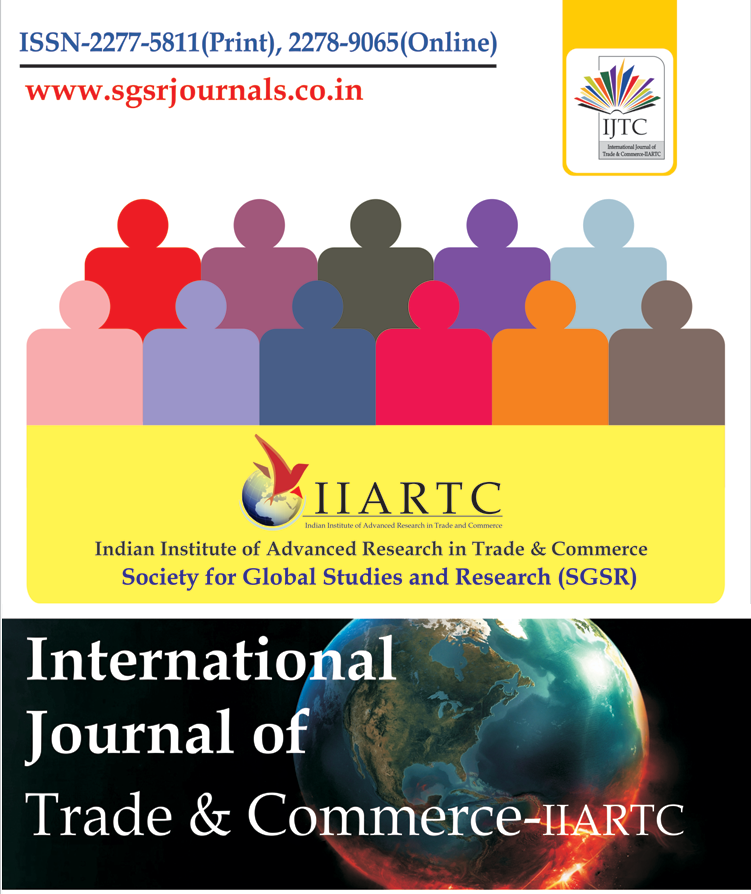Home ⇨ International Journal of Trade & Commerce-IIARTC

International Journal of Trade & Commerce-IIARTC
Impact Factor (IF):5.135 (COSMOS), IF:7.249 (ISRA), IF:3.721 (ISI)
ISSN:2277-5811 (P), ISSN:2278-9065 (O)
Frequency: Half Yearly
Industrial Growth of Manufacturing Sector in Uttarakhand (Micro, Small and Medium Enterprises)
The micro, small and medium enterprises have played a very important role in the development of country. MSME occupies a position of prominence and constitute an essential ingredient in the development of Indian economy. In the state of Uttarakhand, the MSME has emerged as a dynamic segment. This Paper aims to measure the growth pattern, capital invested and employment generation through micro, small and medium enterprises in Uttarakhand. The research is purely based on secondary data and carried out in all the 13 districts of Uttarakhand. 8 year’s data has been taken for this paper from 2008 to 2015 of manufacturing sector. Three hypotheses were formulated and tested using T-test. The empirical results indicate that there is a growth in the number of enterprises established, capital invested and employment generated. But the pace of growth is not constant and declined during some years from the studied time period and to overcome this issue promotion of microfinance is required and it could be sufficient to help them get over the level of poverty under the national standard.
Author:Deepikaa*, R.S. Pandeyb
Abstract:The micro, small and medium enterprises have played a very important role in the development of country. MSME occupies a position of prominence and constitute an essential ingredient in the development of Indian economy. In the state of Uttarakhand, the MSME has emerged as a dynamic segment. This Paper aims to measure the growth pattern, capital invested and employment generation through micro, small and medium enterprises in Uttarakhand. The research is purely based on secondary data and carried out in all the 13 districts of Uttarakhand. 8 year’s data has been taken for this paper from 2008 to 2015 of manufacturing sector. Three hypotheses were formulated and tested using T-test. The empirical results indicate that there is a growth in the number of enterprises established, capital invested and employment generated. But the pace of growth is not constant and declined during some years from the studied time period and to overcome this issue promotion of microfinance is required and it could be sufficient to help them get over the level of poverty under the national standard.




